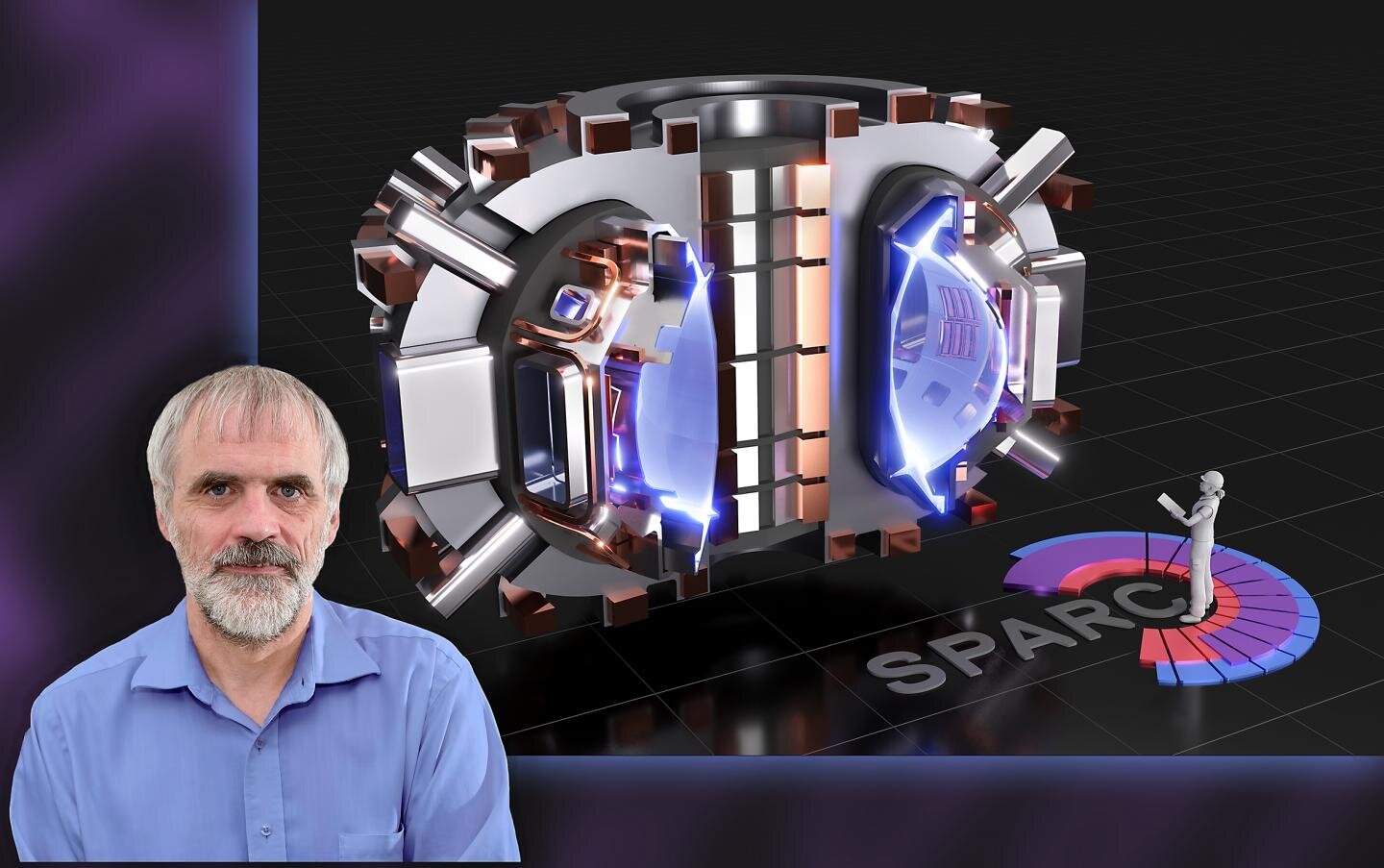
[ad_1]

PPPL physicist Gerrit Kramer with a conceptual image of the SPARC fusion reactor. Credit: Collage and Kramer photo by Elle Starkman / PPPL Office of Communications. SPARC image courtesy of Commonwealth Fusion Systems.
The Princeton Plasma Physics Laboratory (PPPL) of the United States Department of Energy (DOE) is collaborating with the private sector on cutting-edge fusion research aimed at producing commercial fusion energy. This work, made possible through a public-private grant program from the DOE, supports efforts to develop high-performance fusion-grade plasmas. In one of these projects, PPPL is working in coordination with the Plasma Science and Fusion Center (PSFC) at MIT and Commonwealth Fusion Systems, a start-up from MIT that is developing a tokamak fusion device called “SPARC”.
The aim of the project is to predict the leakage of fast “alpha” particles produced during fusion reactions in SPARC, taking into account the size and potential misalignments of the superconducting magnets that confine the plasma. These particles can create a largely self-heated or “hot” plasma that fuels fusion reactions. The development of hot plasma is a major scientific goal for fusion energy research. However, the leakage of alpha particles could slow or stop the production of fusion energy and damage the interior of the SPARC facility.
New superconducting magnets
The main features of the SPARC machine include its compact size and powerful magnetic fields made possible by the ability of new superconducting magnets to operate at higher fields and stresses than existing superconducting magnets. These characteristics will allow the design and construction of smaller and less expensive fusion facilities, as described in recent publications from the SPARC team – assuming that the fast alpha particles created in fusion reactions can be contained long enough to keep the plasma hot.
“Our research indicates that they can be,” said PPPL physicist Gerrit Kramer, who is participating in the project through the DOE Innovation Network for Fusion Energy (INFUSE) program. The two-year-old program, of which PPPL physicist Ahmed Diallo is deputy director, aims to accelerate the development of the private fusion energy sector through partnerships with national laboratories.
Well confined
“We found that alpha particles are indeed well confined in the SPARC design,” said Kramer, co-author of an article in the Journal of Plasma Physics who reports results. He worked closely with lead author Steven Scott, consultant for Commonwealth Fusion Systems and longtime former physicist at PPPL.
Kramer used the SPIRAL computer code developed at PPPL to verify particle containment. “The code, which simulates the wavy pattern, or ripples, in a magnetic field that could allow the escape of fast particles, showed good containment and a lack of damage to the SPARC walls,” Kramer said. Moreover, he added, “the SPIRAL code went well with Finland’s ASCOT code. If the two codes are completely different, the results are similar.”
The discoveries delighted Scott. “It’s gratifying to see the computational validation of our understanding of ripple-induced losses,” he said, “since I investigated the issue experimentally in the early 1980s for my PhD thesis. . “
Fusion reactions combine light elements in the form of plasma – the hot, charged state of matter made up of free electrons and atomic nuclei, or ions, which comprises 99% of the visible universe – to generate massive amounts of energy. Scientists around the world seek to create fusion as a virtually unlimited source of energy to generate electricity.
Key tips
Kramer and his colleagues noted that the misalignment of the SPARC magnets will increase the losses induced by the ripple of the fusion particles, which will lead to an increase in power hitting the walls. Their calculations should provide key insight to the SPARC engineering team on how the magnets should be aligned to avoid excessive power loss and damage to the walls. Correctly aligned magnets will allow for the first time studies on plasma self-heating and the development of improved plasma control techniques in future fusion power plants.
Building a star in a small pot
SD Scott et al, Fast ion physics in SPARC, Journal of Plasma Physics (2020). DOI: 10.1017 / S0022377820001087
Provided by the Princeton Plasma Physics Laboratory
Quote: A new public-private partnership facilitates the development of fusion energy (December 30, 2020) recovered on January 1, 2021 from https://techxplore.com/news/2020-12-public-private-partnership-fusion-energy .html
This document is subject to copyright. Apart from any fair use for study or private research, no part may be reproduced without written permission. The content is provided for information only.
[ad_2]
Source link